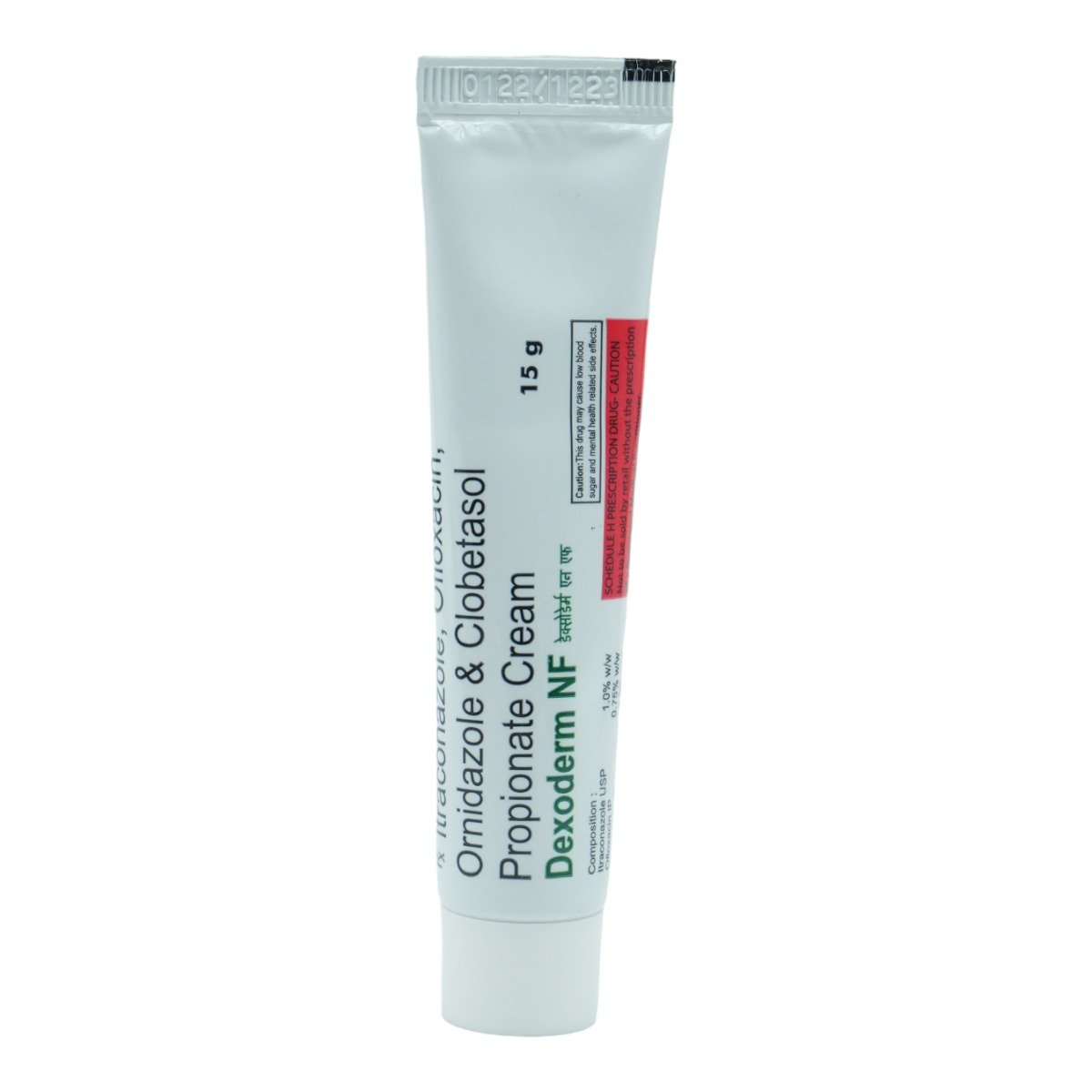Blderm Cream

MRP ₹85
(Inclusive of all Taxes)
₹12.8 Cashback (15%)
know your delivery time
Provide Delivery Location
Manufacturer/Marketer :
Consume Type :
Expires on or after :
Return Policy :

Secure Payment

Trusted by 8 Crore Indians

Genuine Products
Therapeutic Class
Country of origin
Author Details
We provide you with authentic, trustworthy and relevant information
Disclaimer
Alcohol
Safe if prescribed
Interaction of Blderm Cream with alcohol is unknown. Please consult a doctor before consuming alcohol while using Blderm Cream.
Pregnancy
Consult your doctor
The safety of Blderm Cream in pregnant women is unknown. Therefore, it is given to pregnant women only if doctor thinks benefits outweigh risks.
Breast Feeding
Consult your doctor
It is unknown whether Blderm Cream is excreted in human milk. Please consult a doctor before using Blderm Cream while breastfeeding.
Driving
Safe if prescribed
Blderm Cream usually does not affect your ability to drive or operate machinery.
Liver
Consult your doctor
If you have any concerns regarding the use of Blderm Cream in patients with liver problems, please consult a doctor.
Kidney
Consult your doctor
If you have any concerns regarding the use of Blderm Cream in patients with kidney problems, please consult a doctor.
Children
Safe if prescribed
The safety of Blderm Cream in children is unknown. Please consult a doctor.
Product Substitutes
Reference
- https://www.drugs.com/clobetasol-topical.html
- https://www.accessdata.fda.gov/drugsatfda_docs/label/2012/021535Orig1s003,%20021644Orig1s003lbl.pdf
- https://www.nhs.uk/medicines/clobetasol/
- https://www.accessdata.fda.gov/drugsatfda_docs/label/2010/022484s000lbl.pdf
- https://www.drugs.com/mtm/itraconazole.html
- https://www.medsafe.govt.nz/Consumers/cmi/a/arrowornidazole.pdf
About Blderm Cream
Blderm Cream belongs to a class of dermatological medication used to treat bacterial and fungal skin infections. Fungal infection is a skin disease in which a fungus attacks the tissue and causes infection. Bacterial infection is a condition in which harmful bacteria grow in the body and cause infection. Blderm Cream reduces swelling, itching, and redness caused due to certain skin infections.
Blderm Cream contains Clobetasol propionate, Itraconazole, Ofloxacin and Ornidazole. Clobetasol propionate inhibits the release of certain chemical messengers in the body that cause redness, itching, and swelling. Itraconazole damages the fungal cell membranes causing the main components of fungal cells to leak out. Thus, kills fungi and clears the fungal infection. Ofloxacin works by interfering with the bacterial enzyme involved in repairing and replicating the DNA (genetic material) of bacteria. Thereby, kills bacteria and clears the infection. Ornidazole works by damaging the DNA (genetic material) of bacteria and protozoa and inhibits the formation of new DNA. Thereby, kills micro-organisms and clears the infection.
Blderm Cream is only for external use. Use Blderm Cream as advised by a doctor. Avoid contact of Blderm Cream with nose, ears, mouth, or eyes. In case Blderm Cream comes in contact with these areas accidentally, rinse with water thoroughly. Some people may experience dry skin, itching, redness, or burning sensation at the site of application. Most of these side effects of Blderm Cream do not require medical attention and gradually resolve over time. However, if the side effects persist or worsen, please consult your doctor.
If you are known to be allergic to Blderm Cream or any other medicines, please tell your doctor. If you are pregnant or a nursing mother, it is advised to consult a doctor before using Blderm Cream. Do not use Blderm Cream in more than prescribed doses, or for a prolonged time as it may cause adverse effects. Do not wrap or cover the treated area with bandages unless advised by your doctor. Do not apply Blderm Cream to broken skin or cuts. If you have adrenal gland or liver problems and any type of skin infection, inform your doctor before using Blderm Cream.
Uses of Blderm Cream
Medicinal Benefits Mweb
Key Benefits
Blderm Cream contains Clobetasol propionate, Itraconazole, Ofloxacin and Ornidazole. Clobetasol propionate is a corticosteroid that inhibits the release of certain chemical messengers in the body that cause redness, itching and swelling. Itraconazole is an antifungal that weakens and damages the fungal cell membranes causing the main components of fungal cells to leak out. Thus, kills fungi and clears the fungal infection. Ofloxacin is an antibiotic that interferes with the bacterial enzyme involved in repairing and replicating the DNA (genetic material) of bacteria. Thereby, kills bacteria and clears the infection. Ornidazole is an antiprotozoal that works by damaging the DNA (genetic material) of bacteria and protozoa and inhibits the formation of new DNA. Thereby, kills micro-organisms and clears the infection.
Directions for Use
Side Effects of Blderm Cream
- Dry skin
- Itching
- Redness
- Burning sensation at the site of application
Drug Warnings
If you are known to be allergic to Blderm Cream or any other medicines, please tell your doctor. If you are pregnant or a nursing mother, it is advised to consult a doctor before using Blderm Cream. Do not use Blderm Cream in more than prescribed doses, or for a prolonged time as it may cause adverse effects. Avoid contact of Blderm Cream with nose, mouth or eyes as it may cause irritation. In case Blderm Cream comes in contact with these areas accidentally, rinse with water thoroughly. Do not wrap or cover the treated area with bandages unless advised by your doctor. Do not apply Blderm Cream to broken skin or cuts. Do not swallow Blderm Cream. In case of accidental swallowing, contact a nearby poison control centre or consult a doctor immediately.
Drug-Drug Interactions
Drug-Drug Interactions
Login/Sign Up
Drug-Food Interactions
Drug-Food Interactions
Login/Sign Up
Drug-Diseases Interactions
Drug-Diseases Interactions
Login/Sign Up
Habit Forming
Diet & Lifestyle Advise
- Regularly change your socks and wash your feet. Avoid shoes that make your feet sweaty and hot.
- In wet places such as changing rooms and gym showers, don’t walk barefoot. Wear flip-flops or sandals to prevent fungal infections.
- Do not scratch the affected area of the skin, as it can spread the infection to other body parts.
- Avoid sharing towels, combs, bedsheets, shoes, or socks with others to prevent the spread of infection.
- Wash your bed sheets and towels regularly.
- Eat foods rich in quercetin (a flavonoid), such as apples, cherries, broccoli, spinach, and blueberries.
- Consuming food rich in probiotics helps in developing the immune system against allergies.
- Limit intake of food that might trigger allergies, such as dairy products, soy, eggs, and nuts.
- Avoid the consumption of foods with excess sugar, as it may flare up inflammation.
- Include fruits, vegetables, whole grains, healthy fats, and fish in your diet.
- Avoiding getting in contact with harsh soaps, detergents, and rough fabrics.
All Substitutes & Brand Comparisons
RX
Out of Stock4G Cream 15 gm
Glenmark Pharmaceuticals Ltd
₹69.9
(₹4.19/ 1gm)
17% CHEAPERRX
Liftderm Cream 15 gm
Bioshine Healthcare Pvt Ltd
₹84
(₹5.04/ 1gm)
1% CHEAPERRX
Out of StockIT-Win Plus Cream 15 gm
Winbaxy Laboratory
₹84.95
(₹5.1/ 1gm)

Have a query?
Buy best Dermatology products by
Glenmark Pharmaceuticals Ltd
Sun Pharmaceutical Industries Ltd
Klm Laboratories Pvt Ltd
Cipla Ltd
Canixa Life Sciences Pvt Ltd
Abbott India Ltd
Ajanta Pharma Ltd
Intas Pharmaceuticals Ltd
Dr Reddy's Laboratories Ltd
East West Pharma India Pvt Ltd
Alkem Laboratories Ltd
Atopic laboratories Pvt Ltd
Hegde & Hegde Pharmaceutica Llp
Brinton Pharmaceuticals Ltd
Torrent Pharmaceuticals Ltd
Amwill Healthcare Pvt Ltd
Leeford Healthcare Ltd
Palsons Derma Pvt Ltd
Oaknet Healthcare Pvt Ltd
Med Manor Organics Pvt Ltd
Micro Labs Ltd
Dermocare Laboratories Gujarat Llp
Fixderma India Pvt Ltd
Apex Laboratories Pvt Ltd
Mankind Pharma Pvt Ltd
Ipca Laboratories Ltd
Yaher Pharma
Systopic Laboratories Pvt Ltd
Menarini India Pvt Ltd
Ethinext Pharma
Nemus Pharmaceuticals Pvt Ltd
Skinocean Pharmaceuticals
Dermacia Healthcare
Inex Medicaments Pvt Ltd
Lupin Ltd
GlaxoSmithKline Pharmaceuticals Ltd
Talent India Pvt Ltd
Zydus Cadila
Kivi Labs Ltd
Zydus Healthcare Ltd
Hbc Dermiza Healthcare Pvt Ltd
Mrhm Pharma Pvt Ltd
Regaliz Medicare Ltd
Sol Derma Pharmaceuticals Pvt Ltd
Newtrimed Healthcare Pvt Ltd
Wallace Pharmaceuticals Pvt Ltd
Eskon Pharma
Glowderma Lab Pvt Ltd
La Pristine Bioceuticals Pvt Ltd
Mohrish Pharmaceuticals Pvt Ltd
Percos India Pvt Ltd
Rockmed Pharma Pvt Ltd
Macleods Pharmaceuticals Ltd
Praise Pharma
Ethicare Remedies Pvt Ltd
Kaizen Drugs Pvt Ltd
Aurel Biolife
Rely On Pharmaceuticals
Wockhardt Ltd
Galcare Pharmaceuticals Pvt Ltd
Elder Pharmaceuticals Ltd
Indiabulls Pharmaceuticals Pvt Ltd
La Med Healthcare Pvt Ltd
Biocute Life Care
Yap Bioceuticals
Yash Pharma Laboratories Pvt Ltd
Zee Laboratories Ltd
Apple Therapeutics Pvt Ltd
Adonis Laboratories Pvt Ltd
Albatross Healthcare Pvt Ltd
Galderma India Pvt Ltd
Prism Life Sciences Ltd
FDC Ltd
Alniche Life Sciences Pvt Ltd
Salve Pharmaceuticals Pvt Ltd
West Coast Pharmaceuticals Pvt Ltd
Dermarex HealthCare India Pvt Ltd
Arka Vital Science Pvt Ltd
Dermajoint India
Gary Pharmaceuticals Pvt Ltd
Grace Derma Healthcare Pvt Ltd
Karlin Pharmaceuticals & Exports Pvt Ltd
Skinska Pharmaceutica Pvt Ltd
Uniza Healthcare Llp
Alembic Pharmaceuticals Ltd
Cadila Healthcare Ltd
Cadila Pharmaceuticals Ltd
Cosmofix Technovation Pvt Ltd
Human Pharmaceuticals
Indolands Pharma Pvt Ltd
Lyra Laboratories Pvt Ltd
Akumentis Healthcare Ltd
Entod Pharmaceuticals Ltd
Iceberg Health Care Pvt Ltd
Jenburkt Pharmaceuticals Ltd
P and P Dermaceuticals Pvt Ltd
Dabur India Ltd
Indchemie Health Specialities Pvt Ltd
Olcare Laboratories Pvt Ltd
Unison Pharmaceuticals Pvt Ltd
BODY CREAM
Body Lotion
Face Cream
Shampoo
Sun Screen
Face Gel
Soap
Face Wash
HAIR SOLUTION
Face Serum
BODY GEL
Hair Lotion
Hair Serum
Dusting Powder
ANTISEPTIC
FACE CLEANSER
Face Lotion
Body Wash
Body Spray
Eye Cream
FUNGAL INFECTION
Foot Cream
Conditioner
Eye Gel
Cleanser
Hair Cream
Hair Oil
Face Mask
Hair Gel
Sanitizer
Hair Spray
Moisturiser
Skin Ointment
Lip Balm
Capsule
Eye Serum
Intimate Wash
Specialty Supplements
Hand Cream
Facial Spray
SPECIALITY SUPPLEMENT
Face Toner
MEDICATED SHAMPOO
Tablet
Talcum Powder
BABY SUNSCREEN
Body Butter
Body Scrub
DIAPER RASH CREAM
EYE SOLUTION
FACIAL WIPE
Gargle
Hand Wash
Intimate Spray
Lip Serum
Lubricant Gel
MEDICATED CREAM
Nail Polish
VITAMIN D


_0.jpg?tr=q-85)


